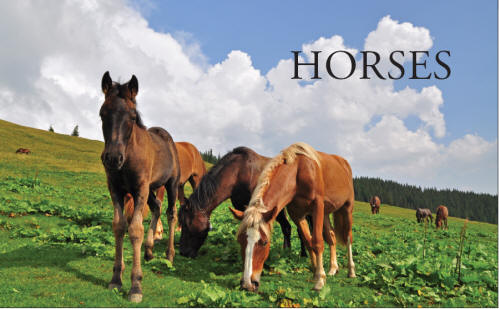
A horse can be a chauffeur (whether you’re in a saddle or in a carriage trailing behind), a farmer’s best friend when the fields need to be plowed, a spotlight-loving performer, or a wonderful pet and companion. The versatility of horses is what makes them such appealing animals. Yet with their great size, comes even greater responsibility. Horses have very specific needs: their living quarters, their diet, their exercise regimen, and their grooming, to name a few. They are complicated animals, but if taken care of the correct way, all the reaped rewards will absolutely be worth the work.
Breeds of Horses
There are hundreds of horse breeds, from the rare Abtenauer bred in a secluded valley just south of Salzburg, Austria, to the elegant Zweibrücken hailing from Germany. While it is fascinating to really explore all the differences in each breed, it is more practical to break the breeds up into three main categories based on their body type. The first two are “light horses” and “draft horses”; light horses are used for undemanding work and for their speed, whereas draft horses are able to complete more arduous tasks. You are likely to see light horses galloping around a racetrack or in a dressage show, while draft horses and their carriages are a popular method of transportation for princesses or, more likely, tourists in New York’s Central Park. The final type of horse is a pony, sizing in at a mere 14.2 hands or under. Ponies have always been especially popular amongst children.
1. Light horses—An example of a light horse is the thoroughbred. This breed’s native home is England, where their human counterparts have fostered racing for over a thousand years. They have slender necks, deep, wide chests with long, slanting shoulders, and hind quarters that are high and muscular. Their legs are long and they end in rounded, well-shaped feet. Their lithe, angular bodies favor speed and are in complete opposition to a draft horse.
2. Draft horses—A Clydesdale is a well known draft breed. Bred in Scotland and later imported to America, this horse is famous for its intimidating size and its gigantic, hairy feet. Clydesdales are tall, and long limbed; they have medium-sized necks joining with slanting shoulders that meet strong legs, heavily fringed below the knee. This hair was often criticized by horsemen as being a fault of the breed; it was too hard to keep clean and free of disease, but many are fans of the defining characteristic.
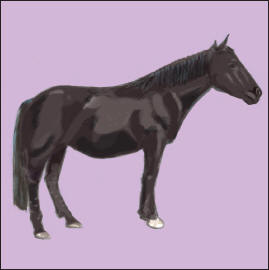
Abtenauer
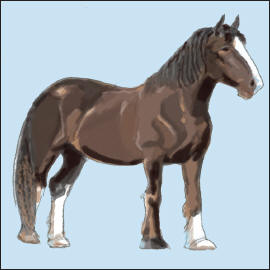
Clydesdale
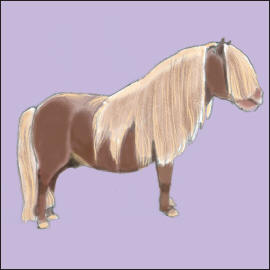
Shetland
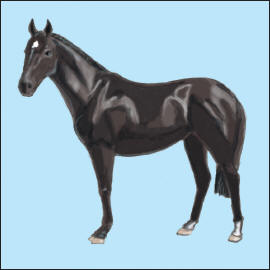
Thoroughbred
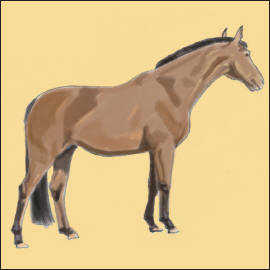
Zweibrucken
3. Ponies—A Shetland pony is one of the more popular breeds. Shetlands resemble small draft horses, with their foretops, manes, and tails heavy and long. Being tinier than other horses, a pony is a great option for a child learning how to ride—they are exceedingly intelligent and can be readily trained.
Decide what you want to do with your horse before you select a breed; if you want your horse to be ridden, who will be the primary rider? Do you plan on leisurely trail rides or do you want your horse to be a racer? Once you figure these things out you can narrow down your choices. For many people, especially if they are new to having horses, the breed is not necessarily the deciding factor. Most care more about a horse’s personality and how well trained or how green the horse is. If selecting a horse to begin breeding, then the breed would obviously have to be taken into deep consideration.
Housing
Horses should have some kind of shelter; all horses need to be protected from inclement weather. Housing can be indoor or outdoor, or even a combination of the two. It is decided by the use of the horse on a day-to-day basis. Indoor housing is ideal for horses that are being ridden or used every day in the winter time. The size of the stall should be around 12x12, which is the industry standard, but if you are housing a draft horse then the dimensions should be increased to 16x16. Horses should be provided with bedding for their stall (different types of straw or shavings); they need a dry, soft bed. Their bedding should also be kept fresh and clean, which means cleaning the stall daily and removing soiled bedding and manure. If an owner neglects the horse’s stall, it lessens the comfort and promotes disease. Outdoor housing has a myriad of advantages, for example lower construction costs and less labor where cleaning the building is concerned. The building should be a three-sided structure, like a run-in shed.
Grooming
Unlike other farm animals, horses must be groomed. Without grooming, a horse is susceptible to discomfort and diseases; this includes taking care of a horse’s hooves because feet are the horse’s most complicated structures, and the most integral to look after. A horse’s hooves should be cleaned (with a pick) every day, before and after riding or being sent out to do work. The feet are the most liable to injury from the effects of hard work and mismanagement, and subsequently, there is no body part that more requires care in both health and disease. Prevention, in the foot’s case, is much better than cure. It is also a good idea to get the horse shoes, which prevent the hoof from wearing down—a hoof wears down faster than it grows back. A stable horse should be thoroughly groomed each day, before and after the horse’s work; it is necessary to scrub away the “scurf” (the small shreds of epidermis that are continually exfoliated from the skin) that obstructs the pores. Doing so, admits free perspiration and promotes circulation to the extremities. Cleaning and rubbing the skin is obviously important, but it is also imperative for the legs and feet because it preserves soundness.
Feeding and Watering
With horses, it is unnecessary to limit the amount of water; it should be left up to the horse’s discretion. He will take only as much as he wants. Food, however, is a different story. Horses can be overfed with hay (horses will eat it just for the amusement) and with their oats or grain. They should be fed according to however much they work—a work horse would be fed a more substantial amount than an idle horse, for example. If a horse is continually overfed, its appetite will eventually increase and, of course, the horse will become overweight. Horses should be fed regularly, at a scheduled time, as they anticipate the hour they will be fed and will become nervous it is too long delayed. As for what to feed horses—oats have been proven especially great for them; they favor speed and endurance more than any other food. If oats are too expensive, grains like barley, wheat, rye, and bran can be substituted. Horses are sometimes even known to eat corn. It should also be noted that if one is changing a horse’s feed, it needs to be gradual, otherwise, there could be digestive problems.
Care and Keeping of Horse Tack
The “tack” of a horse is a general term meaning the equipment needed to ride and/or work a horse. This includes the saddle, saddle blanket/pad, reins, bridle and bit, and stirrups. This equipment, especially any tack directly in contact with the horse such as the saddle, should be cleaned after every use.
Before cleaning your saddle, unfasten any buckles and remove any fittings. Using a damp towel, remove any dust, dirt, mud, hair, or other debris.
To clean the leather saddle; get basic saddle soap, a sponge, and water. Lather up the soap and scrub the saddle, using the sponge or a small soft bristled brush. Rinse the saddle with water and lather it again–if the suds are grey it means the saddle is still dirty. It is important that the pores of the leather are clean and do not become clogged with dirt.
Use the cleaning and disassembly of your tack to check for any weaknesses or tears. Fix any small problem immediately before it becomes a bigger problem.
Occasionally it will be necessary to condition the saddle with oil. It is usually time to apply the oil if the saddle is “thirsty” and soaking up the washing water. After the saddle is cleaned, but not all the way dry, apply the oil, making sure not to apply too much. For a new saddle three coats of oil is necessary, but for an older saddle one heavier followed by one light one is enough. Buff the saddle with a soft cloth after oiling to wipe off excess. Riders use everything from expensive, special leather saddle oil to plain cooking oil.
Clean any other leather tack, including the bridle and reins in the same way as the saddle. Wipe off the bit and any other metal parts immediately after use.
Once a week the bit and bridle should be entirely taken apart and cleaned thoroughly.
Any nylon tack should also be cleaned. Simply wash the nylon with soapy water and allow it to air dry completely. No special cleaning or oil is required.
Brush off the saddle blanket/pad after every use. This is the gear that touches the horse the most, and any dirt, thorns, or grass will irritate the horse’s skin.
Make sure to store tack properly between uses. Do not leave any leather in damp places, such as barns or basements; mold and mildew will develop and ruin the saddle in as little as one month. Be sure to keep your tack out of the elements; snow and rain will dampen the leather while direct sunlight will cause the leather to dry out and crack.
Breeding
For horse owners, the idea of breeding from their own mare has much appeal. The prospect of producing a foal with qualities similar to its mother, or even better, has many attractions.
Before any breeding decisions are made, it is best to have knowledge about normal breeding behavior, what should happen at foaling, and how a newborn foal should behave and develop, is essential. For this reason, it is best for a novice horse breeder to seek professional help with mating and foaling from a stud.
Common Diseases
One of the most common, and most dangerous, diseases a horse can contract is colic. Colic is a broad term that covers any acute gastrointestinal problem: colic could be anything from a stomachache or cramp from changing food too fast to impaction of waste in a horse’s intestines. Colic can be fatal; it is the leading cause of premature death among domesticated horses, and therefore if an owner suspects his or her horse has colic, it is absolutely necessary to call a vet. Some symptoms of colic are restlessness, lying down, kicking with the hind feet upward and toward the belly, jerky swishing of the tail, groaning, frequent position changes, and stretching as if to urinate, but with greater intensity, the movements become violent: the horse may throw himself down, roll, assume unnatural positions (for example, sitting on his haunches), and grunt loudly. With colic, the pain is not constant, so during the periods of peace, the horse may act completely normal. However, during the periods of pain, the horse will be sweating profusely.
As stated earlier, it is imperative that the owner takes care of their horses’ sensitive hooves. There are many diseases that result from neglected feet. One common disease is laminitis, where the horse’s digital laminae (attached to the hoof wall and coffin bone) become inflamed. It will eventually become impossible for the horse to walk without pain. It is impossible to discern that a horse has laminitis without radiographs (so if an owner suspects it, they should consult a vet); but the owner should be wary of laminitis if the horse has any of the following symptoms: sweating, increased vital signs, and a tendency to favor the afflicted foot.
Founder is not a disease, exactly, but a complication of many horse diseases. Founder occurs when a disease (like laminitis) goes untreated for a very long time. What will happen is that the coffin bone will sink through the frog of the hoof making moving, and even standing, impossible without extreme pain and discomfort. A horse that founders and refuses to stand could very likely end up with colic—and that means the horse is in a lot of danger of dying. Any horses that founder will need constant attention and possibly even hospitalization in an equine clinic.
Choosing a Team of Work Horses
Choosing your team of work horses, the number, the size, and appearance, is dependent upon what you plan to do with them. If you want them to pull a carriage and become mascots for beer, then their appearance suddenly becomes high priority and their pulling capacity less so. However, if you need a team of work horses to help your farming operation, the size of the field and the nature of the work will dictate the horses you’ll need.
A general rule to follow is 25 acres of land per draft horse; it is always wise to have an extra horse in case of injury or to lighten the load. And speaking of the load, a horse can exert 10 percent of its body weight in a horizontal pull steadily—meaning a 1,000 lb horse could exert a 100 lb pull while a 2000 lb horse could do twice that. It is good to know that for a brief time, a horse can exert a pull of half its own weight. The breed is much less important than the build, health, training, and manners of the horse.
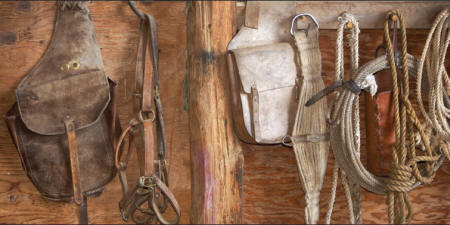
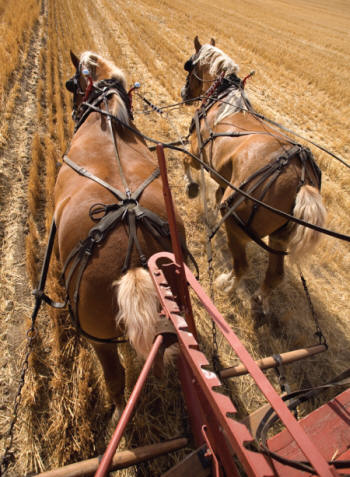
When looking for a team, you must pay close attention to how well-matched they are. Notice whether they go the same (walk the same pace, work well together) and whether they are close in size. Short, sturdy draft horses will be easier to harness on a daily basis, but bigger ones may be able to handle larger loads.
It’s best to procure horses privately from someone you know to be trustworthy. Buying from an auction is very risky; “broke” can mean a wide range of levels of experience and training, so make sure you have all the facts and speak to the owner, if you can, if you are intent on buying from an auction. After finding a horse in which you’re interested, check its feet to be sure they’re sound. If the feet pass inspection, check for clean, straight limbs. Next, look at the breadth of the brisket and the width of the barrel back through the hips. Carefully inspect the hocks for any sign of defects as this joint takes the most strain in a heavy pull. As you do this, notice the horse’s reactions and personalities. Having a horse that enjoys kicking is dangerous for someone who will work so closely with it.
The best thing to do when choosing a team of work horses is to drive them yourself, pulling or doing something similar to what you’ll do at home. Seeing them in action is the only way to know how much training they’ve had, how they react to one another and the work they are doing, and how they react to you as a teamster. If the owner objects to something you ask him to show you, make sure to ask why. If a horse has flaws or defects, think first about how you would handle it, monetarily and otherwise, before you decide that horse is or isn’t the one for you.